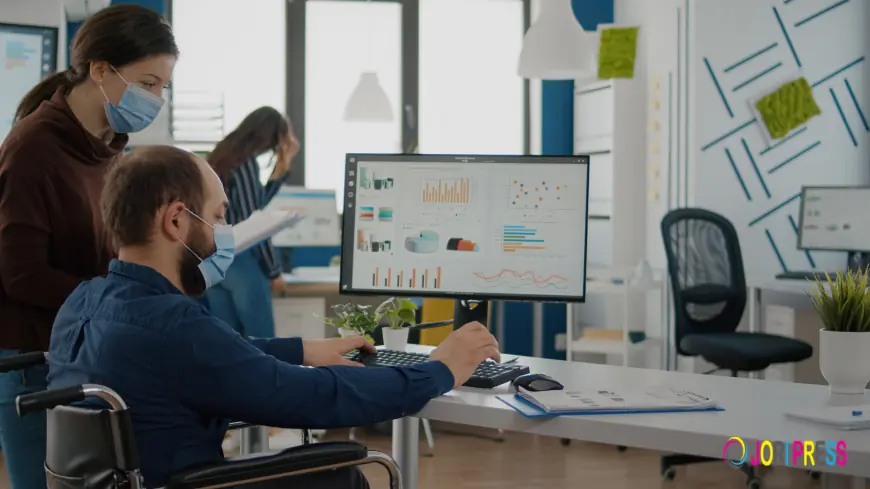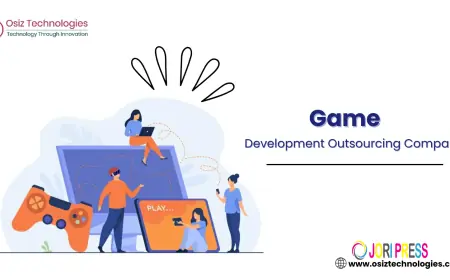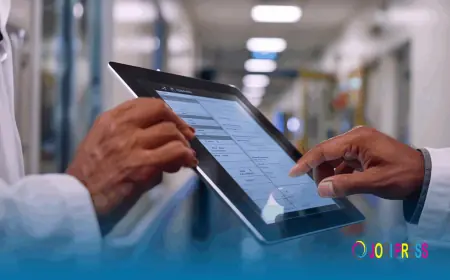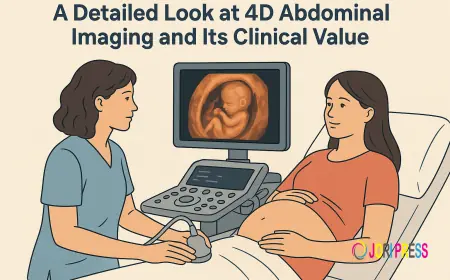Why Digital Clinical Workspaces Are Revolutionizing Healthcare (And How Your Organization Can Benefit Today)

The healthcare industry is at an exciting turning point where cutting-edge technology meets patient care. Digital clinical workspaces are changing the game for healthcare professionals, making it easier than ever to access information, work together, and deliver quality care. The digital clinical workspaces market is growing rapidly as hospitals and clinics worldwide discover just how valuable these platforms can be.
This guide will walk you through everything you need to know about digital clinical workspaces and how they're transforming healthcare delivery.
What Are Digital Clinical Workspaces?
Think of digital clinical workspaces as your all-in-one healthcare command center. These smart platforms bring together patient records, medical applications, and communication tools in one easy-to-use place. Doctors and nurses can access patient information, diagnostic tools, and team messaging from anywhere—whether they're at their desk, in the patient's room, or even working remotely.
The demand for these solutions has skyrocketed as healthcare organizations realize they need better ways to manage workflows and coordinate care. Medical professionals want quick access to everything they need—electronic health records, imaging results, lab reports, and team chat—all from a single, simple interface.
Today's digital workspaces use powerful technologies like artificial intelligence, cloud computing, and real-time analytics. This means clinicians can make faster, smarter decisions while spending more time with patients instead of clicking through multiple systems.
Why Healthcare Organizations Are Rushing to Adopt These Systems
Several important factors are driving hospitals and clinics to embrace digital clinical workspaces:
The Data Explosion: Patient information is growing exponentially. Healthcare providers need smart systems that can organize, analyze, and present this data clearly. At the same time, they're under pressure to work more efficiently, cut costs, and improve patient outcomes.
Regulatory Push: Government requirements for electronic health records have accelerated digital transformation. Organizations must meet strict data security standards while ensuring different systems can talk to each other. Digital workspaces solve these challenges with secure, compliant platforms.
Better Care Coordination: The shift toward value-based care means healthcare teams need to work together seamlessly across departments and locations. Digital workspaces make this possible, ensuring patients receive consistent care throughout their healthcare journey.
Interestingly, the technology powering these workspaces is similar to what's used in other high-tech industries. The computing power needed for real-time data analysis and medical imaging is comparable to fields exploring AI unbound concepts. Some healthcare organizations even look at specialized hardware options like Nvidia H100 GPU resale markets when they need to scale up their capabilities for advanced imaging and diagnostic analytics.
The Building Blocks of Great Clinical Workspaces
Easy Access and Smooth Integration
The best digital workspaces make integration look effortless. Healthcare providers need single sign-on—log in once and access everything. The unified endpoint management market size shows just how important it is to manage all those different devices and access points smoothly.
But integration goes deeper than just gathering data. Smart workspaces use intelligent algorithms to show you the right information at the right time, based on your role, the patient's condition, and what you're working on. This reduces information overload and helps you focus on what matters most.
Real-Time Team Collaboration
Modern healthcare requires constant communication between team members. Digital workspaces include secure messaging, video calls, and shared documentation features that make real-time consultations easy. These tools are lifesavers in emergency situations where quick coordination can make all the difference.
The challenge is balancing easy access with strong security. Healthcare organizations use robust authentication and encryption while keeping the interface user-friendly so staff actually want to use it.
Smart Analytics and Decision Support
Data-driven insights are what make digital workspaces truly powerful. Predictive analytics can flag patients who might be at risk for complications, allowing doctors to intervene early. Clinical decision support systems put evidence-based guidelines right into your workflow, ensuring consistent, high-quality care.
Processing all this healthcare data requires serious computational power. Many organizations now use hybrid workload automation strategies that balance their own servers with cloud resources, optimizing performance while controlling costs.
What to Consider Before Implementing
Infrastructure and Compatibility
Before jumping in, healthcare organizations need to take a hard look at their existing technology. Legacy systems need careful integration planning to ensure data flows smoothly between platforms. You'll need to assess network capacity, storage needs, and whether your devices are compatible.
The complexity of healthcare IT can be mind-boggling. It's similar to challenges in chip design, where engineers must choose between options like Cadence vs Synopsys based on their specific needs. Healthcare IT teams face similar decisions when picking workspace platforms that fit their organization and existing technology.
Getting Your Team on Board
Here's the truth: technology only works if people actually use it. You need comprehensive training programs that meet staff where they are—some will be tech-savvy, others less so. Smart organizations roll out changes gradually, giving users time to adjust while providing plenty of support.
Clinical champions—respected doctors and nurses who advocate for the new system—are worth their weight in gold during implementation. They can show colleagues the real benefits and identify workflow improvements based on actual use.
Security and Compliance
Protecting patient data is non-negotiable. Digital workspaces must have rock-solid security including authentication, authorization, data encryption, and detailed audit logs. Organizations must comply with healthcare privacy laws while keeping systems easy to use.
Regular security assessments and penetration testing help catch vulnerabilities before they become problems. Have a plan for handling potential breaches while keeping care delivery running smoothly.
5 Steps to Successful Implementation
-
Start with a thorough needs assessment - Talk to clinical staff across all departments. Find out what's slowing them down, what systems need to connect, and what features would actually help them deliver better care.
-
Create a detailed integration roadmap - Map out how data flows between your existing systems. Identify the standards you'll use and set realistic timelines that won't disrupt patient care.
-
Build a solid governance framework - Decide who makes decisions, who's accountable for making the system better, and how you'll gather feedback to keep improving based on real user experiences.
-
Roll out a comprehensive training program - Design training for different roles, create easy-to-access reference materials, and establish a network of super-users who can help their peers.
-
Keep monitoring performance - Track how many people are using the system, how well it's performing, and most importantly, whether clinical outcomes are improving. Use this data to keep making things better.
The Future is Bright: Emerging Technologies
Innovation keeps pushing digital workspaces forward. Advanced photonics technologies, including developments in TFLN photonics, promise lightning-fast data transmission speeds. Imagine accessing huge imaging files and genomic datasets instantly, regardless of file size.
Artificial intelligence is getting smarter every day. Machine learning models will get better at predicting clinical outcomes and recommending treatments. Natural language processing will handle documentation automatically, letting clinicians spend more time talking with patients instead of typing notes.
Different technology sectors are converging in interesting ways. Manufacturing innovations, similar to those from the Intel foundry business, are creating more powerful, energy-efficient processors. These improvements enable advanced clinical applications right at the point of care, making digital workspaces even more capable.
FAQs
What are the main benefits for healthcare organizations?
These platforms improve care coordination by putting everything in one place. Organizations work more efficiently because staff spend less time hunting for information. They support better clinical decisions by presenting complete patient data clearly, which leads to better outcomes and fewer errors.
How do these systems solve interoperability problems?
Modern platforms use standard health information exchange protocols that let different systems share data easily. They translate data formats between vendors automatically, so information flows smoothly while maintaining accuracy across all care settings.
How is patient data kept secure?
These systems use multiple layers of security including encryption, multi-factor authentication, and role-based access controls. They track every data access and modification. Regular security updates protect against evolving cyber threats.
How long does implementation typically take?
It varies by size and complexity. Small practices might finish basic setups in three to six months. Large hospital systems with many legacy systems might need 12 to 24 months for full deployment. Phased approaches help organizations see benefits sooner.
What will AI bring to future platforms?
AI will transform these platforms through better predictive analytics that spot patient risks earlier. Machine learning will personalize interfaces for each clinician and patient. Natural language processing will handle documentation and enable voice controls.
What's Your Reaction?
 Like
0
Like
0
 Dislike
0
Dislike
0
 Love
0
Love
0
 Funny
0
Funny
0
 Angry
0
Angry
0
 Sad
0
Sad
0
 Wow
0
Wow
0
















































